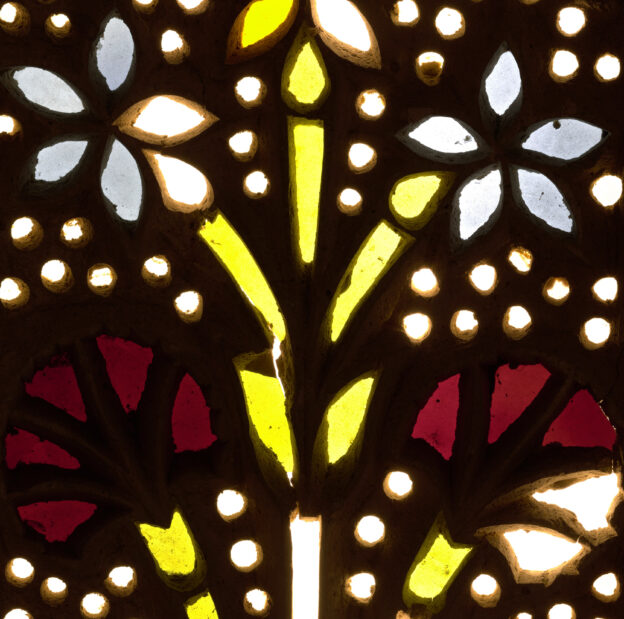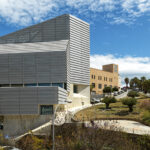 The exhibition “Refracted Histories through Stained Glass: 19th c. Islamic Windows as a Prism into MIT’s Past, Present, and Future,” curated by Rami Alafandi and Gwendolyn Collaço, is now on display in the Distinctive Collections’ Maihaugen Gallery.
The exhibition “Refracted Histories through Stained Glass: 19th c. Islamic Windows as a Prism into MIT’s Past, Present, and Future,” curated by Rami Alafandi and Gwendolyn Collaço, is now on display in the Distinctive Collections’ Maihaugen Gallery.
The exhibit features a set of striking gypsum and stained glass windows dating to the late 18th- to 19th century Ottoman Empire, which the curators discovered among numerous architectural artifacts from the earliest days of the Institute’s architecture program in the Rotch Art Collection, Department of Distinctive Collections. This discovery led to extensive research on the craft and the commissioning of contemporary works in the tradition, also displayed in the gallery, which was transformed into a space that evokes architectural spaces illuminated by windows in this tradition.
Windows similar to the Ottoman-era examples in the MIT collection once graced the reception halls of elite homes, like al-ʿAzam Palace in Damascus and Bayt al-Razzaz in Cairo. While halls of this type have fallen victim to the ravages of time, war, and recent earthquakes, those in MIT’s collection are examples of windows that came to Europe and the United States either as decontextualized architectural elements or as part of full reception halls from historic houses in the Islamic world, such as those still on display in the Victoria & Albert Museum in London and the Metropolitan Museum of Art in New York. This exhibition illuminates the life of these historic windows, tracing their refracted histories from Egypt to MIT, their ongoing conservation, and the cutting-edge research they still prompt.
Curators from the Aga Khan Documentation Center (AKDC) uncovered the narratives explored in this exhibition through historical and archival research. In collaboration with the Wunsch Conservation Lab, they commissioned a project conservator and documented the process of carefully cleaning and stabilizing these windows for exhibition and long-term preservation. They also teamed up with MIT’s Department of Materials Science and Engineering and the Vitrocentre in Switzerland to run experiments that more precisely located the origins of the materials used in these windows.
Finally, they commissioned contemporary artist Dima Srouji and artisan Mohamed El-Deeb to create new works inspired by the tradition. Visit the exhibition before July 17 to see these works, learn about the tradition, and understand how stained glass windows illuminate architectural spaces in the Islamic world.

